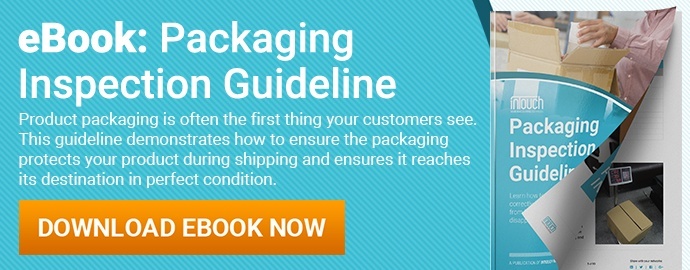One of the most common reasons for quality control inspections to FAIL is surprisingly simple and has nothing to do with the actual item you are buying from a factory. “Poor”, “damaged” or “inadequate” packaging are all possible culprits for failed inspection.
The Importance of Solid Packaging
It may surprise some buyers, but packaging will often take up anywhere from a 1/4 to a 1/2 of a product inspection checklist (see How to Create a QC Checklist). Packaging is put through quite the trial, even being checked for visual defects that would make the finished goods look unappealing on a store shelf to the perusing consumer. Faulty packaging can also result in the item being damaged during transport, or even make your final product break various advertising and safety laws.
"Packaging is the most common part of production subcontracted out to other companies"
3 Benefits of Packaging Engineers
The first step to quality is selecting a supplier that has strong supplier qualification and incoming QC systems. The second is setting your supplier up for success by giving them exact specifications for the packaging you will need, instead of relying on them to make decisions that they may not be properly equipped to make (see 5 Most Important Packaging QC Checkpoints). The more specific and detailed you can be the less room there is for error. The easiest way for you to ensure that you’re providing enough of the right specifications is by hiring a packaging engineer. These experts and the services they offer serve multiple purposes:
1. Cost Reduction through Design
What types of materials will give your packaging the most strength for the  lowest cost to make sure no product has to be discarded due to damage? What kind of structure will provide the most strength while using the least amount of raw material?
lowest cost to make sure no product has to be discarded due to damage? What kind of structure will provide the most strength while using the least amount of raw material?
A packaging engineer will also consider how to reduce size in order to get the highest number of units in a container and reduce weight to lower other shipping costs.
2. Protecting Your Product
Most packaging engineers, especially ones associated with larger firms, will have access to an entire array of testing apparatuses and protocols that check how much damage and stress your packaging can withstand while still being able to protect your product. This includes set ups for various kinds of drop tests, machines for rigorous transportation and aging simulations, vibration testing, strength tests, etc. all within controlled laboratory settings. To learn more about packaging tests, see 5 Packaging Tests Vital for Product Inspection.
While these labs are not always accredited to certify if your packaging will comply with local laws (like California’s Prop 65), they are often equipped well enough to simulate the tests and tell you if the packaging would pass at an accredited lab at much lower costs. Moreover, engineers will either be familiar enough with the packaging laws of your target market or have access to a compliance expert to advise on how to make your packaging compliant.
3. Marketing Presentation and Features
If your item is sold in stores, what design and colors will grab the consumer’s attention and move them to purchase? A packaging engineer can offer insight.
T he packaging design can also affect user experience and can play an important role in how your product is used. If you buy a gallon of juice or milk, is the bottle easy and comfortable to hold and pour without spilling the contents? If you buy an eye shadow, is the pallet small and secure enough to slip into a purse and survive daily abuse, while also leaving enough space for the product to be easily accessed and applied? These are all questions that a professional packaging engineer can help you answer.
he packaging design can also affect user experience and can play an important role in how your product is used. If you buy a gallon of juice or milk, is the bottle easy and comfortable to hold and pour without spilling the contents? If you buy an eye shadow, is the pallet small and secure enough to slip into a purse and survive daily abuse, while also leaving enough space for the product to be easily accessed and applied? These are all questions that a professional packaging engineer can help you answer.
Where to Find Packaging Engineers
You can hire a design firm who will employ a number of packaging engineers themselves. The most professional packaging manufacturers will often employ packaging engineers. Both of these types of companies will often develop the previously mentioned laboratories and compliance services.
If you already have a general idea of what types of packaging you need, you can also hire packaging engineers on a contract basis to review and improve the designs you already have. If your company is large enough, you might even look into hiring your own engineers to work with your product development, supply chain and marketing teams directly.
Conclusion
Not every product or situation will need you to make the investment of hiring the services of a packaging engineer. Some factories have the experience and knowledge to determine suitable packaging if you provide artwork. You might also feel you have enough experience with packaging for a particular product type and don’t need outside help.
But if you are having problems with product arriving damaged, prohibitive packaging costs affecting your bottom line, or even just not being able sell as much product as you think you can, it may be time to consult an expert and see if they can help.
Do you have a packaging horror story? Share it in the comments below!







